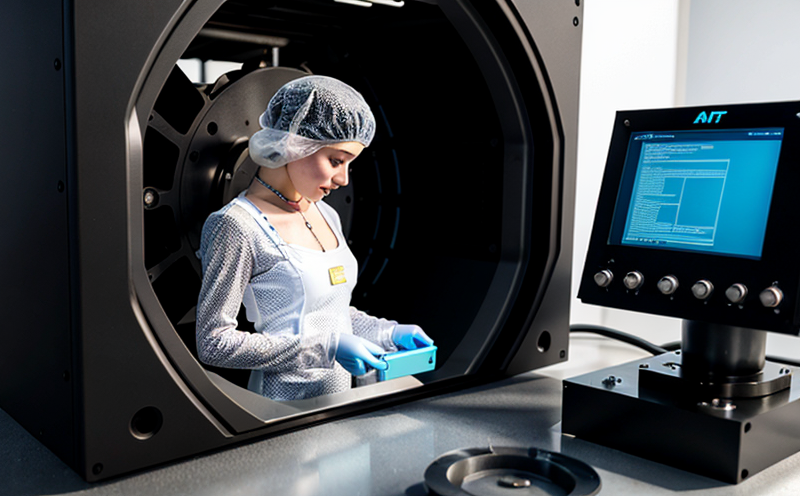ASTM F3335 In-Situ Monitoring and Process Validation Testing
The ASTM F3335 standard provides a comprehensive approach to in-situ monitoring and process validation within the additive manufacturing (AM) sector. This service ensures that AM processes are optimized, reliable, and meet stringent quality standards. By leveraging this method, manufacturers can ensure consistent performance across various AM technologies including laser powder bed fusion (LPBF), electron beam melting (EBM), and binder jetting.
The ASTM F3335 standard is particularly relevant for industries such as aerospace, medical devices, automotive, and defense where the quality of manufactured parts directly impacts safety and functionality. This service focuses on real-time monitoring during the AM process to capture critical parameters that influence part quality including temperature, pressure, power output, and material flow.
The testing procedure involves placing sensors within or around the build chamber to gather data throughout the manufacturing cycle. This allows for the continuous assessment of key variables which can then be analyzed using advanced statistical tools to ensure compliance with specified standards. The resulting insights enable process adjustments in real-time, leading to more efficient and precise AM operations.
For quality assurance teams, this service offers a robust framework for validating processes against industry benchmarks. It helps identify potential issues early in the manufacturing cycle, reducing rework costs and enhancing overall product reliability.
The ASTM F3335 standard is widely recognized as an authoritative source for AM process validation due to its rigorous testing protocols and emphasis on reproducibility. Compliance with this standard can significantly enhance a manufacturer's reputation and market position by demonstrating a commitment to quality assurance practices that align with international standards.
- Competitive Advantage: Ensures consistent part quality across multiple AM technologies, reducing variability and improving product reliability.
- Market Impact: Establishes a benchmark for process validation in the AM industry, contributing to increased trust among end-users and regulatory bodies.
In summary, ASTM F3335 In-Situ Monitoring and Process Validation Testing is essential for manufacturers looking to optimize their AM processes. It provides critical data that can be used to refine procedures, enhance product quality, and maintain compliance with international standards.
Benefits
The implementation of ASTM F3335 In-Situ Monitoring and Process Validation Testing offers numerous advantages for manufacturers involved in additive manufacturing. These benefits extend beyond mere compliance to encompass enhanced operational efficiency, reduced production costs, and improved product quality.
- Enhanced Quality: Continuous monitoring ensures that every part produced meets the highest standards of integrity and functionality, which is crucial for industries like aerospace where precision is paramount.
- Operational Efficiency: Real-time adjustments based on in-situ data lead to more efficient use of resources such as time and materials, streamlining production processes.
- Cost Reduction: Early detection of process anomalies minimizes the need for post-manufacturing inspections and rejections, thereby reducing waste and associated expenses.
- Innovation Support: By providing detailed insights into how different parameters affect part quality, this service facilitates ongoing innovation within AM processes.
For compliance officers and R&D engineers, the ability to validate processes against industry-leading standards like ASTM F3335 adds significant value by ensuring that products meet not only regulatory requirements but also exceed customer expectations.
Quality and Reliability Assurance
The ASTM F3335 standard plays a pivotal role in establishing robust quality assurance frameworks for additive manufacturing processes. By incorporating in-situ monitoring into the validation process, manufacturers can ensure that each part produced adheres strictly to predefined specifications.
Key aspects of this service include:
- Data Collection: Sensors placed strategically within or around the build chamber collect real-time data during the manufacturing cycle. This includes temperature, pressure, power output, and material flow rates.
- Analytical Tools: Collected data is analyzed using advanced statistical methods to assess compliance with specified standards. Any deviations from expected parameters are flagged for immediate attention.
- Continuous Improvement: The insights gained through this process enable manufacturers to make informed decisions about refining their processes, ultimately leading to improved part quality and consistency.
For procurement teams, ensuring compliance with ASTM F3335 standards helps in selecting reliable suppliers who adhere to stringent quality control measures. This not only enhances the reputation of the manufacturer but also fosters long-term relationships based on mutual trust and shared goals.
In conclusion, the ASTM F3335 In-Situ Monitoring and Process Validation Testing service is a cornerstone for maintaining high standards of product quality in the rapidly evolving field of additive manufacturing. It provides the necessary tools to ensure that every part produced meets not only current but also future regulatory requirements.





